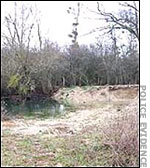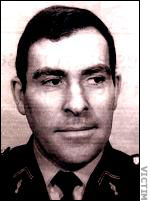 |
| Medical-Educational Institute |
Among the 17 girls missing or found murdered were seven pupils from the Medical-Educational Institute, a special needs school for handicapped young women in Auxerre. The girls, 16 to 22 years old, were accounted for in December 2000, when a former bus driver of the school made a startling confession. Emile Louis, 68, admitted to police that he had sex with the seven pupils and then murdered them sometime between 1977 and 1979.
When the girls first began to disappear, the police interviewed Louis because he was known to have a history of sex offenses. However, they did not pursue him for long and eventually he was disregarded as a potential suspect. Eventually, the cases were dropped and the girls were listed as runaways.
 |
| Emile Louis, mugshot |
Louis continued to drive female pupils to and from school. It is also believed that he continued to rape and kill them indiscriminately. He would not be looked at as a suspect for almost another two decades.
Hugh Schofield's article Mystery of France's Missing Girls suggested that there were similarities between many of the cases. He quoted Corinne Herrmann, a French lawyer and author of the book The Disappeared of the Yonne, stating that the girls were either mentally handicapped, "or like Joanna far from home." Moreover, according to Stuart Jeffries 2000 article for The Observer, witnesses were able to place Louis near the spots where many of the victims were last seen.
 |
| Scene where bodies found |
Louis was caught almost two decades later when his daughter found items in his house belonging to several of the victims. During his confession, Louis told authorities that he buried the girls near the
Yonne River. Only the skeletal remains of two girls were ever recovered.
Not long after his admission of guilt, Louis changed his story. He claimed that he was pressured into giving false testimony and that he actually didn't commit the murders. In a January 2002 article in The Guardian by Jon Henley, Louis insisted that "the girls were routinely abused and finally abducted and killed by a nebulous ring of men 'of some standing, locally and in the region." Not surprisingly, Louis' story was met with skepticism by local investigators.
Louis could not be charged with the murders anyway because under French law it was considered unlawful to convict anyone of a murder 10 years after a crime was committed. According to Jeffries, Louis was instead "convicted for kidnapping, for which there is no statue of limitations." The authorities believed Louis could have been involved in some of the other murder cases, yet there was not enough evidence to convict him.
One thing was for certain: Louis could not have been directly responsible for Joanna's death. At the time of her murder, he was serving a prison sentence for sexually assaulting a minor. Nevertheless, Schofield suggested that a private investigation conducted for 13 years by French police agent Christian Jambert, 56, "clearly established that Louis was linked to all the women." It was believed that he was affiliated with a sex ring operation that prostituted, abused and even murdered many girls in the region, possibly including Joanna.
 |
| Christian Jambert, victim |
Initially the authorities ignored Jambert's theories, but an incident in 1984 led them to reconsider the idea that there was indeed a sex ring in the area. That January, a 19-year-old girl was found wandering the streets of Auxerre in a confused state. When the police picked her up and questioned her she claimed that she was held captive in the basement of a nearby house, where she was sexually abused and tortured.
The girl's testimony led the police to the home of Claude and Monique Dunand, known friends of Emile Louis. Stuart said that when they searched the house, they found another girl in the cellar, "naked and suspended from a ladder by her wrists." He further claimed that for approximately 15 years, local handicapped girls were lured to the house, locked up, fed dog food and repeatedly raped and tortured by invited guests. However, there was no indication that any of the girls were murdered.
Claude Dunand was eventually convicted of kidnapping and given a life sentence in 1991. His wife Monique received two years for accessory to the crimes. According to Andrew Alderson and Kim Willsher's article 'I Want Justice for Joanna,' Yonne crime reporter Ludovic Berger stated, "Claude Dunand has always said that politicians, industrialists and magistrates were involved but he has refused to name them." The article further suggested that a list of at least 50 clients "rumored to include several French 'notables' who paid to torture and abuse" captive girls was discovered by police and handed over to the Auxerre Courthouse. However, the list mysteriously disappeared from a courtroom and has never been found.
It was not the only document that went missing. In fact, there were more than 100 murder and missing person case files from between 1958 and 1982 that vanished from the courthouse. Moreover, the court ledger documenting the investigations also vanished. It became increasingly clear that someone was either trying to cover up the crimes or the Auxerre Courthouse had a serious management problem.
